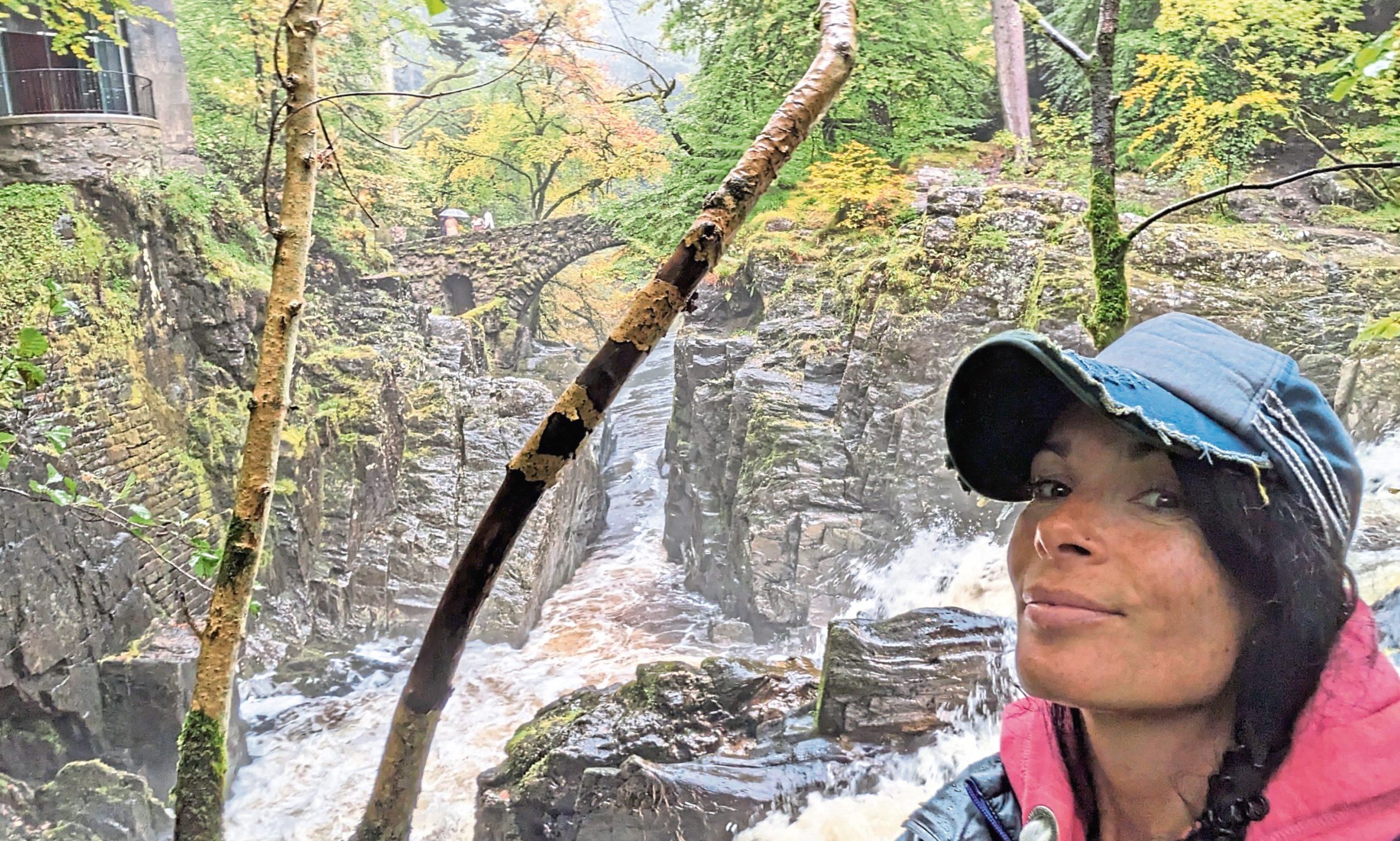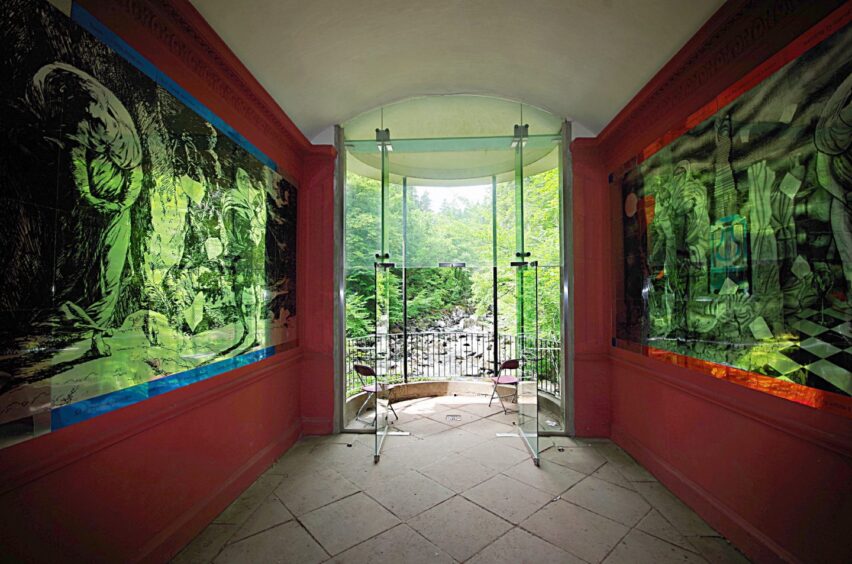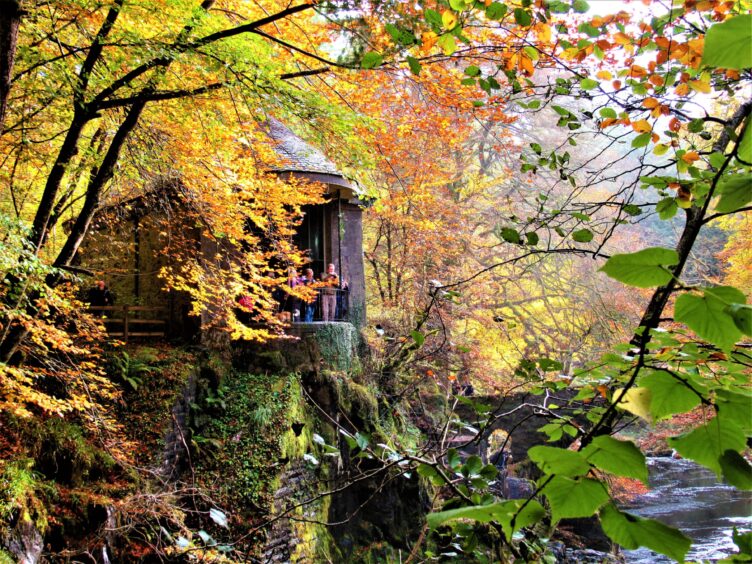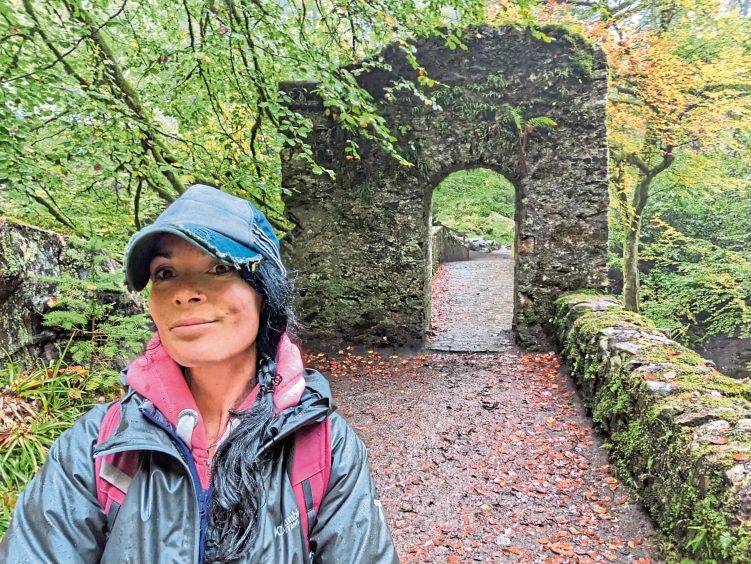Autumn is in full flourish when I visit the Hermitage, with leaves bursting into flamboyant shades of red, orange and yellow.
The towering Douglas Firs afford shelter from the elements and are among the tallest trees in Britain.
This magical forest, a few miles from Dunkeld, was designed in the 18th Century as a pleasure ground for the Dukes of Atholl.
It was a “must-see” on the itinerary of early tourists to Scotland, visited by poet William Wordsworth and his sister, Dorothy, as well as the painter John Turner, composer Felix Mendelssohn and Queen Victoria.
One of most Instagrammable autumn walks
So it’s little surprise that it was recently named among the 10 most Instagrammable autumn walks in the UK by Parkdean Resorts.
It only takes a few minutes to stroll from the Hermitage car park along the roaring River Braan to Ossian’s Hall, a curious folly overlooking the thundering Black Linn Falls.
It’s worth pausing on the ancient stone arch bridge to peer down into the foaming pools below.
The bridge was built in 1770 by order of John Murray, the third Duke of Atholl, and it’s been the subject of many paintings.
Standing next to it, and appearing to be growing out of it, is a magnificent cedar of Lebanon, believed to be at least the same age as the bridge, or possibly slightly older.
It’s a rare survivor of the 18th-Century wilderness garden planted here in the 1750s.
Hotspot for film-makers
As I gaze in wonder at the idyllic scene, I become aware of three people – who appear to be plucked straight out of the Victorian, or Jacobite, era – loitering at the bridge.
One person is dressed in a plaid outfit, and the other is sporting what looks like a fancy Victorian costume. I then spot a man with a serious-looking camcorder, so obviously there’s some sort of filming in action.
Ossian’s Hall is mesmerising
I leave them to it and wander down to Ossian’s Hall. Anyone who heads inside this bizarre viewing platform is in for a treat.
Its circular interior is decorated with mirrors and paintings, said to recreate the illusions of “shock and amazement” that were the aims of the original folly’s design.
It’s changed, somewhat, since the first folly was built here in 1757 – as a summerhouse retreat (in other words, a hermitage) from the pressures of everyday life.
In 1783, the more substantial Ossian’s Hall was built to replace the basic pavilion, as a shrine to the blind bard, Ossian, and to spark excitement at the dramatic falls. Inside was a “luxurious” drawing room decorated with mirrors, paintings and plaster work.
As if by magic
Visitors entering came face to face with an almost life-sized painting of Ossian and then, as if by magic, a secret pulley slid the painting into a recess in the wall, giving access to a “brightly painted” inner room.
The noise of the rushing water burst into their ears, while the falls below were reflected in mirrors covering the walls and ceiling.
Sadly, the hall was partly blown up by gunpowder-wielding vandals in 1869, and the story goes that the attack was a protest against toll charges on the bridge at Dunkeld imposed by the seventh Duke of Atholl.
After it was repaired, the painting of Ossian was replaced with one of “Beardy Willie”, a favourite ghillie of Queen Victoria. But by the early 20th Century, the folly was derelict.
Salvaged and restored
Thankfully the National Trust for Scotland salvaged the quirky building in 1951 and fully restored it in 2007.
Another fascinating feature is Ossian’s Cave, a natural grotto in the woods enhanced with boulders and a stone seat.
It’s thought to have been built around 1760 for the third Earl of Breadlbane, and once boasted the inscription of an Ossianic poem.
Apparently the guide, “hermit” Donald Anderson, would greet visitors dressed in animal skins, his beard adorned with lichen!
Woodland walks
Once you’ve had your fill of follies and fancies, you can walk for miles deep into woodland and through pasture, with a vast network of paths stretching across the region.
Look out for a totem pole in the woods, salmon leaping up the falls, and red squirrels. I strolled to the evocatively-named Rumbling Bridge, an old stone bridge across the River Braan which boasts a series of tumbling, whooshing rapids. It’s a great picnic spot.
From there, I crossed a road, passed a house (Tomgarrow), and followed a track leading through a grassy area, and into woodland.
Fabulous fungi
The track twists and turns and I paused to investigate some fascinating-looking fungi.
There are some fine examples of the famous fairy toadstool fungi, fly agaric, plus an abundance of unidentified species.
The light was fading when I arrived in the hamlet of Inver, with its cute cottages and impressive old whitewashed house.
Glorious on the dreichest of days
The final haul saw me hoofing it alongside the busy A9, eventually emerging back at the entrance to the car park. I’d dodged the worst of the rain and had an incredible afternoon, packed with heritage, magic and wonder.
The Hermitage is glorious even on the dreichest of days. Now is a fantastic time to crunch through leaves and bask in the rays of sunlight that shine through the trees.
It’s free to visit The Hermitage but parking is £3.
Faskally Woods near Pitlochry was also named among the 10 most Instagrammable autumn walks in the UK by Parkdean Resorts.














